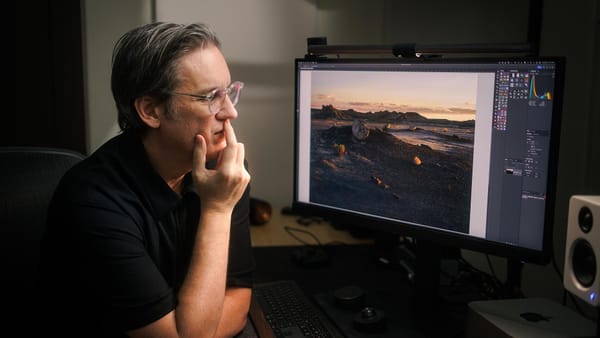Sigma 18-35mm f/1.8 ART review: best Canon R5 video lens?
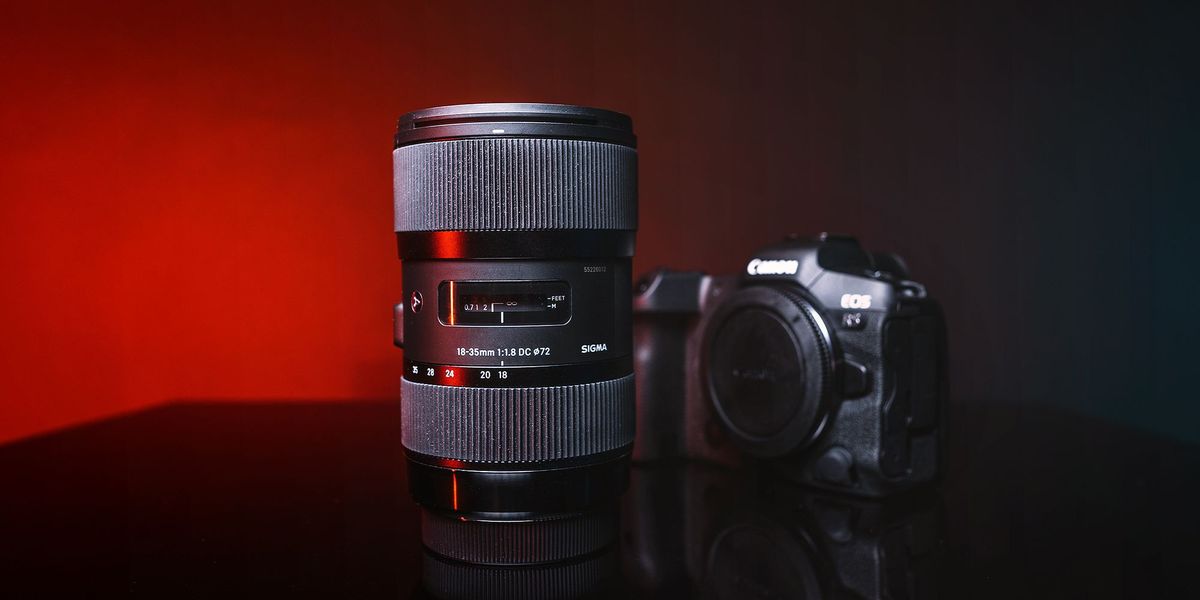
The Sigma 18-35mm f/1.8 DC HSM Art is a $700 variable zoom lens designed for APS-C, crop sensor cameras. The lens is available in a variety of mounts including Nikon, Sony, Pentax, and Canon.
I’m primarily a Canon full-frame shooter, so this lens from 2013 has never been on my radar. But that changed once I started shooting video with the Canon EOS R5.
The idea of using a crop sensor lens on a full-frame camera like the R5 may sound strange, but the R5 and Sigma 18-35mm f/1.8 are a surprisingly strong combination for video.
I’ll explain why in a minute, but let’s begin by taking a look at how the crop sensor, EF mount Sigma 18-35mm f/1.8 performs when used for full-frame, still photography.
Sigma 18-35mm f/1.8 for photography
To find the full-frame, “35mm equivalency” of the APS-C Sigma 18-35mm, you multiply its focal length by crop factor (which is 1.6 for Canon cameras). This translates to an effective 27-53mm focal length range on full-frame cameras.
On older DSLRs like the full-frame Canon 5D Mark IV, you can see what’s happening (see below). Images contain massive amounts of vignette. Once cropped in post, the image then has the same field of view as a 27-53mm full-frame lens.

The Canon EOS R5 is, however, smarter than the 5D. The R5 recognizes the Sigma 18-35mm’s crop factor and automatically changes its Cropping/Aspect Ratio setting to “1.6x (crop)”.
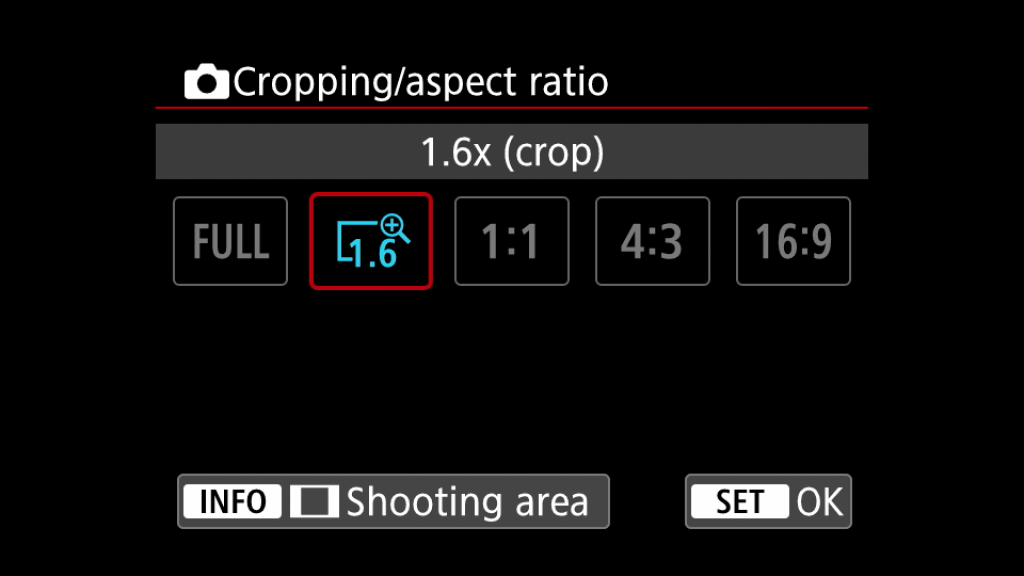
The net result is an optically-zoomed, clean image without any vignette (see below).

The R5 is effectively cropping the image for you. That’s more convenient than how the Canon 5D Mark IV functions, but the net result is still a low resolution image (18 megapixels instead of 45, the native resolution of the R5 sensor).
For wildlife photographers who need additional reach, or photographers who only publish images online, 18 megapixels may be enough. But for me, 18 megapixels is a big drop in resolution, so I would not use the Sigma 18-35mm f/1.8 for my own still photography.
Video, however, is a different story.
Sigma 18-35mm f/1.8 for video
Despite its limitations when shooting stills, the Sigma 18-35mm f/1.8 is surprisingly great for video on the R5. Here’s why.
Large f/1.8 aperture
The Sigma-35mm has a large, maximum aperture of f/1.8. This translates into a brighter image and less noise when used wide open. In terms of light gathering capabilities, the f/1.8 aperture is roughly equivalent to f/2.8 on a full frame lens. This makes the low-light performance of the Sigma similar to Canon’s excellent 24-70mm f/2.8 for less money.
(Note 05/18/2021 — an earlier version of this review incorrectly assumed f/1.8 on this lens was equal to f/1.8 full frame. This mistake has been corrected.)
Variable focal lengths
Unlike a prime lens with a single focal length, the Sigma is variable. You may zoom in-and-out without physically moving your camera setup. This offers greater flexibility, speed and creative control when composing a shot — especially when mounted on a tripod.
Additionally, the Sigma’s “35mm equivalent” focal length range of 27-53mm is standard and well-suited for most video work. Usually this APS-C to full-frame focal length conversion doesn’t work in your favor, but this one does.
Cropped, high-quality 4K
Here is where the Sigma 18-35mm f/1.8 truly shines on the R5, though at first it may be hard to tell.
Attach the Sigma (or any APS-C lens) to the R5, and the camera automatically enables Movie Cropping. This is effectively doing for video the same thing as the aforementioned Aspect Ratio by applying a 1.6x crop.
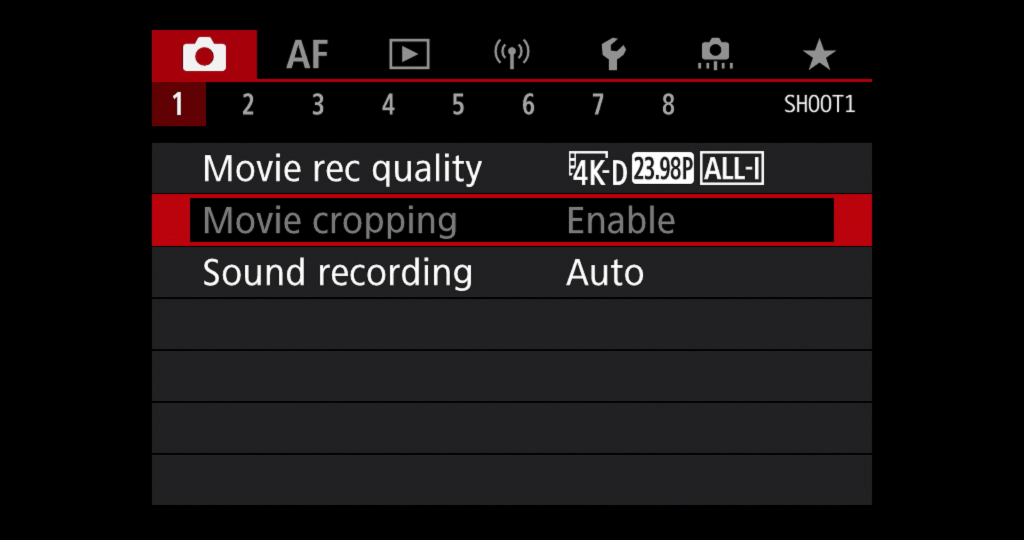
But because the R5 can shoot 8K video, Movie Cropping applies a 1.6x crop to an 8K image. This creates a 5.1K image, which is then downsampled to 4K. This is what Canon calls “4K Crop” video.
“4K Crop” video is higher quality than regular 4K, which is what you get when 4K HQ mode and Movie Cropping are both set to “Disable” (see below).
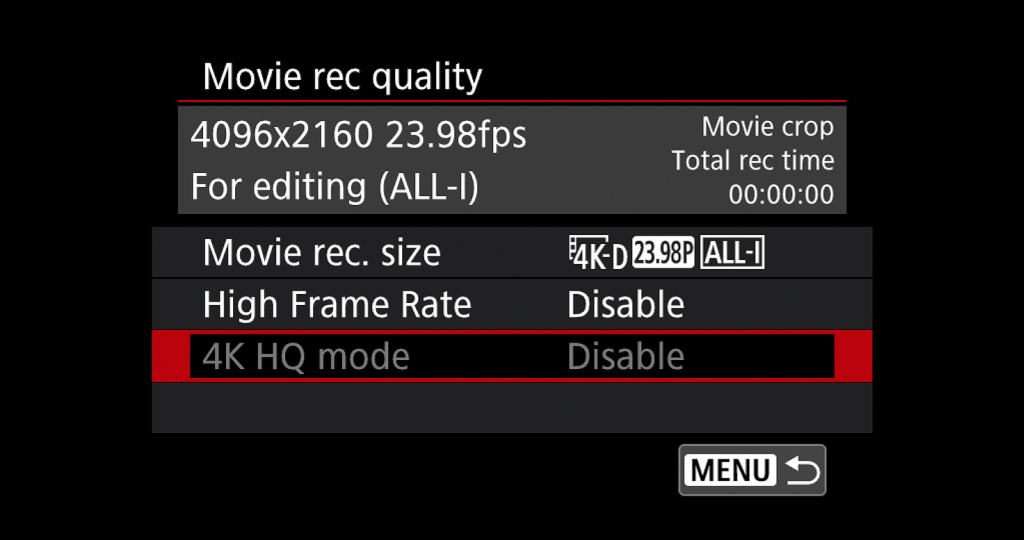
And that’s the confusing thing about “4K Crop” video on the R5, for when an APS-C lens like the Sigma is attached, it may appear the R5 is shooting in regular 4K because 4K HQ mode is disabled. But it’s not. Behind the scenes, with Movie Cropping enabled, the R5 is oversampling 5.1K when shooting 4K.
From a qualitative perspective, there is little difference in image quality between 5.1K and 8K when downsampled to 4K. To demonstrate, below is some “4K Crop” test footage using the Sigma 18-35mm f/1.8 on the EOS R5.
By the way, you may enable Movie Cropping and shoot “4K Crop” video with any lens, not just APS-C. I’m simply pointing out that — unlike still photos — 4K video on the R5 is higher quality than you may expect.
No overheating in 4K Crop
But here’s the best thing about “4K Crop” video. No overheating when recording internally!
Oversampling 5.1K to 4K is apparently less taxing on the camera than 8K to 4K, so the R5 does not heat up or require periodic cool downs as it does when shooting “4K HQ” video. The only limitation with “4K Crop” then is the R5’s 30 minute record time limit, which is standard in all their non-cinema cameras.
Downsides of the Sigma 18-35mm f/1.8
As good as the Sigma 18-35mm f/1.8 may be for video on the R5, it does come with a few downsides to be aware of.
Size and weight
The Sigma 18-35mm f/1.8 is bulky, long, and weighs nearly two pounds (1 pound, 15 oz to be exact). This makes the lens somewhat cumbersome and heavy when shooting handheld on the R5.
Requires an adapter
The Sigma 18-35mm f/1.8 requires a separate EF to RF lens adapter to be mounted on the R5. This adds more weight and sticks the lens farther out than when mounted on an EF camera.
No 8K Video
Because the Sigma is an APS-C lens, full-resolution 8K video isn’t possible. The R5 automatically removes 8K options from Movie Record Quality when mounted.
Final thoughts
The Sigma 18-35mm f/1.8 is an affordable lens with fantastic “Sigma Art” image quality, sharpness, and performance when shooting video on the Canon EOS R5. Its large aperture is well suited for shooting video in low light environments, its “35mm effective” 27-52mm focal length is just right, and you may capture high quality 4K video without overheating.
The Sigma 18-35mm feels like two or three prime lenses in one variable zoom, which makes it a great all-around video lens.
The closest lens to the Sigma 18-35mm made by Canon is the Canon RF 28-70mm f/2, which by all accounts is a fantastic lens, but it costs (at the time of this article) over $3,000 in the United States. Yikes.
All told, the Sigma 18-35mm f/1.8 is still just as unique and useful today as it was when released in 2013, and is worth considering for shooting video on the R5.
Video
Check out the video version of this review below.



